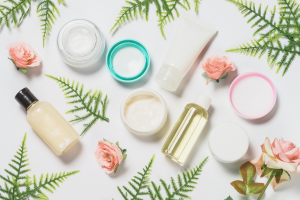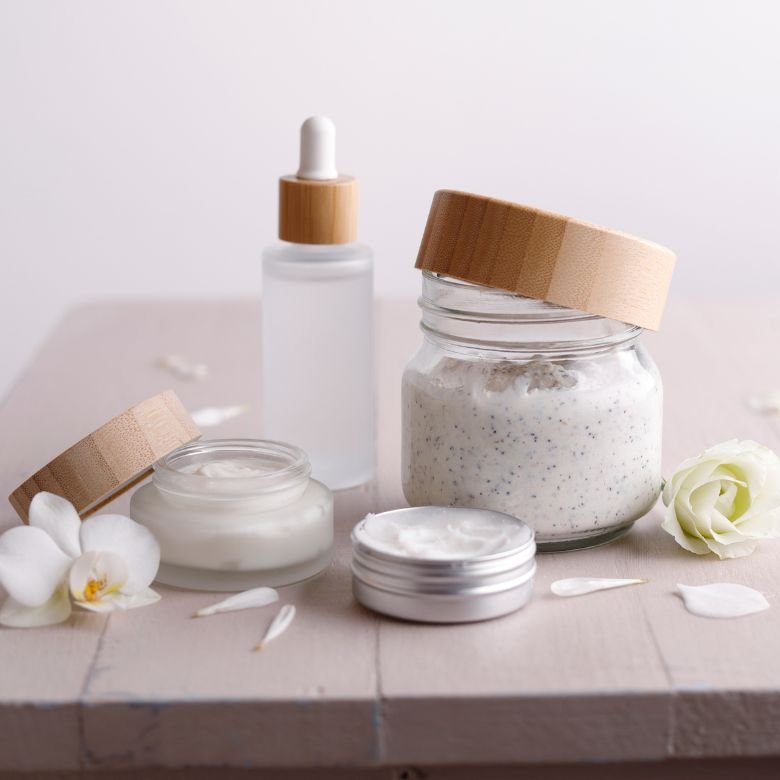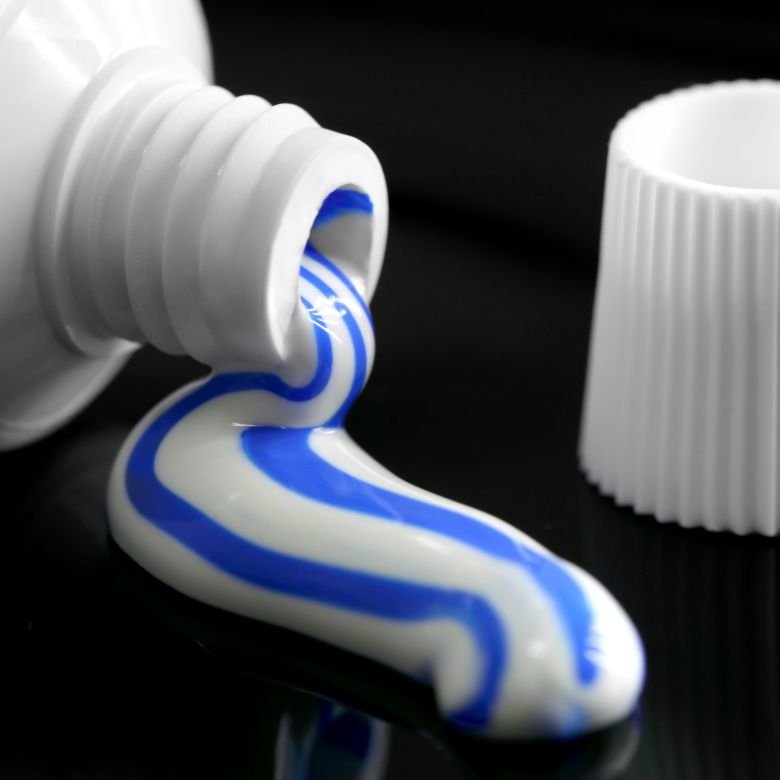Cosmetics are special chemical products and preparations designed to help maintain personal hygiene, care, and general health of the human body. Such products usually have direct contact with our skin, and we expect them to affect it in a particular way. The cosmetics industry uses a wide range of raw materials rich in such elements as zinc, sulphur, oxygen, carbon, or gold. Each of them increases the activity of the formulation in its specific way and, in consequence, improves the efficacy of the cosmetics it was used in. The article below is focused on zinc, which shows many beneficial properties.

Cosmetics including zinc have been very popular for quite a long time now. Stores offer it in various formulations, among others in face creams, tonics, gels or powders designed by leading cosmetic brands.
Research has shown that human skin is one of the tissues being the richest in that element. The highest quantities of zinc are located in the epidermis, in the spinous layer. The zinc concentration in the dermis gets lower along with the depth of that layer. Zinc takes part in many physiological reactions, including the production of prostaglandins being responsible for secretory functions. It affects skin regeneration processes, being an active link in the processing of fatty acids. It also supports the metabolism of collagen, which is responsible for many functions, including the growth of hair and nails.
Depending on the chemical nature of the zinc-based material, cosmetic products can show a broad spectrum of actions. It turns out that zinc acts as an antioxidant and protects against ultraviolet radiation, thus it supports various methods of preventing skin cancer. The antioxidant properties are caused by three factors. Firstly, zinc shows no oxidation-reduction activity, and in consequence it is incapable of producing free radicals. Secondly, the production of free radicals is caused by the presence of harmful metal ions that zinc can replace. Thirdly, the present constituents such as metallothionein or superoxide dismutase strengthen the antioxidant properties. The effect of zinc cations on the reactive forms of oxygen produced by nicotinamide adenine dinucleotide phosphate (NADPH) consists in reducing their activity. Zinc also reduces some by-products of cell metabolism, including hydroxyl radicals and compounds that contain the superoxide radical. This contributes to the very good anti-inflammatory properties of preparations rich in that ingredient. It has also been proven that zinc accelerates the healing of wounds and prevents infections. Its shortage may lead to allergies and skin diseases, as the immunological system is then disturbed. It turns out that this causes leukonychia, among others. This is why zinc is essential in cosmetics to maintain good skin condition.
As mentioned above, some properties of zinc compounds beneficial in cosmetology are common for all of them, but some compounds have functions that are unique. Depending on the form, they also differ in the power of action and in bioavailability. Given their anti-inflammatory properties, zinc compounds are used in dermocosmetics designed for eliminating inflammatory changes caused by such conditions as rosacea, eczema, or seborrhoeic dermatitis. The International Nomenclature of Cosmetic Ingredients INCI, which lists all ingredients used in cosmetics, includes as many as 55 different materials containing zinc. As many as 7 of them have also been accepted by the FDA as safe and effective agents available for purchase without prescription.
The ingredient being most commonly used for sunscreen cosmetics is zinc oxide. It stands out by its skin contracting and protective effect and the ability to reflect and disperse UVA rays. This makes it classified as a physical filter. It is available as a face cream, milk or fluid containing zinc, to be applied on the skin, where zinc oxide itself takes the form of a very well fragmented dust. With such a form used for production, the preparations do not block skin pores or irritate sensitive skin. Zinc oxide also has mattifying properties. For this reason, we can often see it in formulations intended for people suffering from atopic dermatitis or in cosmetics designed for oily skin. Zinc oxide and zinc carbonate are also characterised by a very strong soothing effect, which is why they are applied for the treatmentof pruritus.

Zinc acetate shows a strong anti-microbial effect, as it inhibits the colonisation of microbes in the formulation and reduces their quantity on the skin surface. In addition, it soothes irritations and supports regeneration. A common practice is to use zinc hydroxide with an aqueous solution of zinc acetate in gel formulations used for after-shave cosmetics and deodorants. An aqueous solution of zinc chloride is also used instead of zinc acetate, which is also practised for face tonics and powders. In the treatment of skin diseases, in order to clean the skin of accumulated sebum and restore an appropriate pH, zinc-based preparations are used in the form of powders, ointments or pastes.
Zinc gluconate is another chemical preparation with an anti-inflammatory and bactericidal effect. It is excellent as an ingredient in cosmetics designed for the care of skin that is oily or suffers from acne, as it reduces the number of bacteria and controls the sebum secretion. In addition, it has a soothing effect and supports skin regeneration. Due to its deodorising properties, it is also added to toothpastes and deodorants, as it prevents unpleasant odours.
Zinc pyrithione, in addition to being used as an active ingredient, also often acts as a preservative. It inhibits the growth of bacteria in the formulation and prevents secondary infections by micro-organisms to which the cosmetic is exposed in daily use, for example if the product is pulled out from the packaging directly with fingers. It is also popular as a dandruff preventer that regulates the sebum secretion and prevents pruritus. Zinc sulphate is an anti-caking substance which prevents the movement of solid particles in the cosmetic product. It is most often used in oral products, as it fights dental caries and removes plaque and discolourations. It additionally shows a strong anti-microbial effect, which also supports its oral and skin application in contracting, anti-inflammatory, soothing and regenerating formulations.
PCA zinc used in cosmetics is an excellent humectant that inhibits drying out and prevents the product from crystallising at the bottle outlet. It is the second zinc-based compound most popular in cosmetics, just after zinc oxide. That raw material, available under the name EXOsoft ZN, has a moisturising effect that additionally improves the texture and flexibility of the skin. It also reduces the activity of the 5-α-reductase and, consequently, the loss of hair. Additionally, it controls sebum secretion and is widely applied, especially in the care of skin with acne and problematic head skin. As other zinc-based compounds, PCA zinc has a contracting, healing and soothing effect. It accelerates skin regeneration, stimulates collagen synthesis and inhibits the increment of bacteria on the skin surface. Besides, PCA zinc is a synthetic detergent from the group of alkyl ether sulphates, being a mild agent often added as an emulsifier, ensuring durability of the emulsion produced. It has strong antioxidant properties, so it retards skin ageing, preventing the action of UV rays. It also shows an anti-microbial effect on Propionibacterium acnes, which is a bacterium responsible for acne efflorescence, and on Staphylococcus epidermidis, a bacteria classified as staphylococcus that penetrates into the blood circulation system of people with weakened immunity, causing various infections and diseases such as peritonitis, meningitis, or even sepsis.

That zinc compound is most commonly used in oral formulations. Apart from the properties typical of zinc compounds (contracting, anti-inflammatory, regenerating and soothing effects), it is characterised by very good anti-microbial and anti-caries properties. In consequence, it reduces the number of microbes occurring in the mouth and eliminates plaque and discolourations.
Zinc chloride, in addition to the already described application with zinc acetate, is a common ingredient in oral hygiene preparations. It acts there as a polishing and cleaning substance. Additionally, it perfectly eliminates unpleasant odours.
The role of zinc myristate is somewhat different compared to other zinc compounds. It is a rheology modifier, i.e. an ingredient that is responsible for increasing the viscosity of the formulation and makes it easier to spread the cosmetic on the skin. It is also an anti-caking substance, which means that it reduces the agglomeration of solid particles in the product. Due to its clouding properties, it makes cosmetics less transparent.
Just like zinc myristate, zinc stearate affects the consistency of the preparation as a rheology modifier. It is also an anti-caking agent. However, it has one additional function: since it leaves a white colour, it is used in teeth whitening preparations.